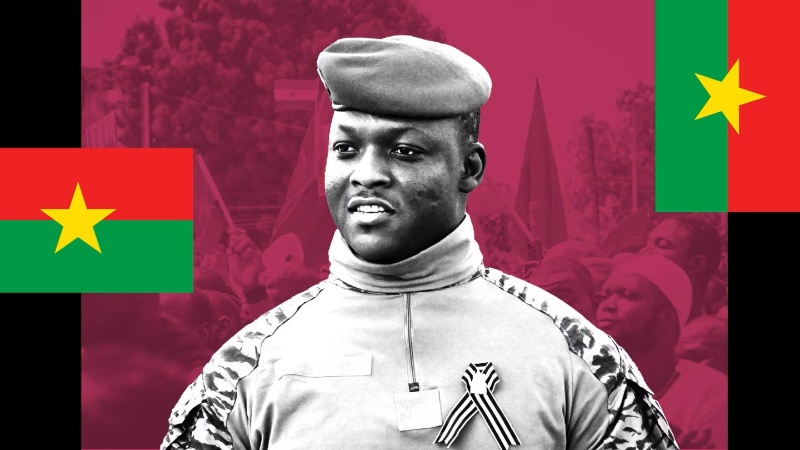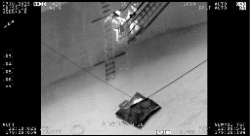Rangitīkei District Council Confirms Collaborative Approach To Water Reforms
At the Council meeting held Thursday 22 May 2025, Rangitīkei District Council cemented its desire to work collaboratively with neighbouring councils to establish a Water Services Council-Controlled Organisation.
It unanimously resolved to progress newly ignited conversations with Palmerston North City Council and Horowhenua District Council, alongside Whanganui and Ruapehu District Councils - should they choose to.
Rangitīkei District Council consulted with residents in March on three models for the future of water services delivery in Rangitīkei, as required by Local Water Done Well.
- Model 1: A Multi Council-Controlled Organisation with Whanganui District Council and Ruapehu District Council (Council’s preferred model).
- Model 2: Keep the status quo – inhouse delivery.
- Model 3: A Multi Council-Controlled Organisation with as many Councils in the Manawatū-Whanganui region as possible.
At the time of consultation, Model 3 - the development of a Council-Controlled Organisation with as many Councils in the Manawatū-Whanganui region as possible, was not viable. This was because other Councils had indicated a preference for alternative models.
In early May 2025, Rangitīkei, Ruapehu, and Whanganui District Councils were approached about collaborating with Palmerston North City Council and Horowhenua District Council to form a larger entity.
“We have received new guidance from the Department of Internal Affairs, the Local Government Funding Agency, and the Commerce Commission on the role each will play in the regulation of Local Water Done Well, and how Councils can best achieve economies of scale in a Water Services Council-Controlled Organisation,” says Rangitīkei Mayor, Andy Watson.
A key element of this guidance is that a Water Services Council-Controlled Organisation servicing 50,000 connections would achieve the greatest cost efficiencies for bill payers.
“The understanding that 50,000 connections would unlock greater savings for all those involved has absolutely contributed to other councils re-entering discussions about a wider model,” says Mayor Andy.
In the meeting, Mayor Andy extended an apology to Rangitīkei residents that the consultation document presented was not as comprehensive as Council would have liked;
“Government timelines are tight. Councils across New Zealand have had to consult with their communities without a full picture of what Local Water Done Well will look like, and certainty around how it will be implemented.”
Of the 90 submissions received during public consultation, feedback was largely supportive of Council’s preference to collaborate.
Feedback also indicated Council’s preferred model at the time - a smaller entity with Ruapehu and Whanganui District Councils (servicing approximately 31,000 connections) - would ensure local voice was balanced alongside the desire to decrease cost.
There was concern from some submitters that an organisation too big would silence the Rangitīkei voice.
Deputy Mayor and Central Ward Councillor, Dave Wilson, addressed these concerns directly, Deputy Mayor and Central Ward Councillor, Dave Wilson, addressed these concerns directly, assuring Rangitīkei residents that local voice will be prioritised in the governance structure of any future entity.
“Local voice remains central and will be prioritised. I understand and appreciate the concerns shared by our communities; however, I am also confident Rangitīkei voice will be protected in a larger Water Services Council-Controlled Organisation because that is the desire of Rangitīkei District Council,” said Councillor Wilson.
Rangitīkei District Council will look to ensure that the constitution of the new Water Services Council-Controlled Organisation identifies key issues where agreement among the councils is required. In addition, Council accepted the preference expressed by Rangitīkei rural water supply schemes to not be transferred to the new entity.
Partnership with iwi was also top of mind. Rangitīkei District Council resolved to continue working with Rangitīkei iwi and hapū on how best to combine their responsibilities as kaitiaki of the water ways and land with the councils’ responsibilities for a safe and efficient provision of water services.
The strong working relationship Rangitīkei District Council has with its neighbours was seen by Councillors and staff as a real strength of its strong negotiating position. Rangitīkei District Council Chief Executive, Carol Gordon, reiterated that relationships built on trust and transparency have been and will continue to be central to success.
Rangitīkei District Council’s decision is subject to its potential partners making their decision clear in the coming month:
- Palmerston North City Council will make its decision Wednesday 4 June
- Horowhenua District Council will make its decision Wednesday 4 June
- Ruapehu District Council will make its decision Wednesday 25 June
- Whanganui District Council will make its decision in early July
Once all decisions have been made, staff will finalise the Water Services Delivery Plan which must be submitted to Government by September 3, 2025. We will inform Rangitīkei residents as soon as the final grouping of councils is clear.
“This is one of the biggest decisions Councils will make for their communities in decades. The three waters, Local Water Done Well debate has involved a huge workload over the last few years.
“I thank all who have engaged in this important work, and the staff who have worked incredibly hard to get to this stage. I am so proud of our Councillors and their drive to deliver long-term benefit for Rangitīkei,” says Mayor Andy.


 Gordon Campbell: On The Costs Of Regulating Cost, And Burkina Faso As A Role Model
Gordon Campbell: On The Costs Of Regulating Cost, And Burkina Faso As A Role Model NZ Police: Cha-Ching - Police Seize Thousands Of Dollars In Fake Bills
NZ Police: Cha-Ching - Police Seize Thousands Of Dollars In Fake Bills Rural Women New Zealand: 100 Years Of Service
Rural Women New Zealand: 100 Years Of Service Serious Fraud Office: SFO Leads Anti-Corruption Taskforce Pilot To Strengthen Public Sector Resilience
Serious Fraud Office: SFO Leads Anti-Corruption Taskforce Pilot To Strengthen Public Sector Resilience Dog Lovers of Monte Cecilia: Locals Challenge Puketāpapa Local Board And Auckland Council’s On-Leash Policy Change For Monte Cecilia Park
Dog Lovers of Monte Cecilia: Locals Challenge Puketāpapa Local Board And Auckland Council’s On-Leash Policy Change For Monte Cecilia Park Maritime New Zealand: Three Rescued In High-Seas Operation After Vessel Abandoned North Of New Zealand
Maritime New Zealand: Three Rescued In High-Seas Operation After Vessel Abandoned North Of New Zealand Health Coalition Aotearoa: Experts Urge Fix As Government Expands Failing Lunch Scheme To Primary Schools
Health Coalition Aotearoa: Experts Urge Fix As Government Expands Failing Lunch Scheme To Primary Schools


